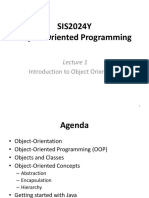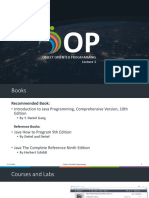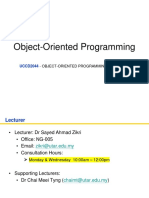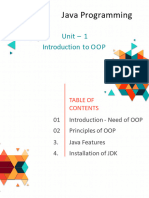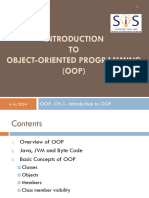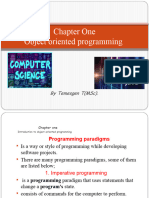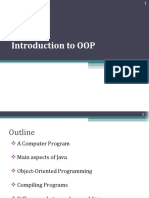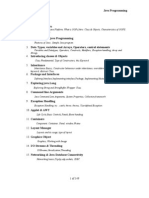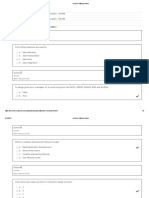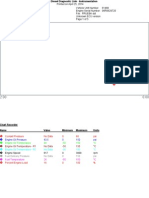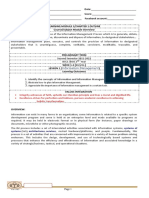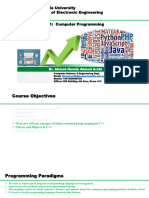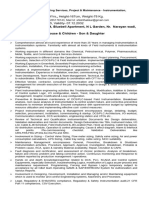0% found this document useful (0 votes)
139 views44 pagesLecture 1
Object Oriented Programming (OOP) is introduced along with the key concepts of encapsulation, abstraction, inheritance and polymorphism. The first program in Java prints "Hello World" by using the main method, which must have a specific signature and return type. The code is compiled to bytecode and run on the Java Virtual Machine (JVM). Memory is managed through garbage collection in Java.
Uploaded by
MoCopyright
© © All Rights Reserved
We take content rights seriously. If you suspect this is your content, claim it here.
Available Formats
Download as PDF, TXT or read online on Scribd
0% found this document useful (0 votes)
139 views44 pagesLecture 1
Object Oriented Programming (OOP) is introduced along with the key concepts of encapsulation, abstraction, inheritance and polymorphism. The first program in Java prints "Hello World" by using the main method, which must have a specific signature and return type. The code is compiled to bytecode and run on the Java Virtual Machine (JVM). Memory is managed through garbage collection in Java.
Uploaded by
MoCopyright
© © All Rights Reserved
We take content rights seriously. If you suspect this is your content, claim it here.
Available Formats
Download as PDF, TXT or read online on Scribd
/ 44

